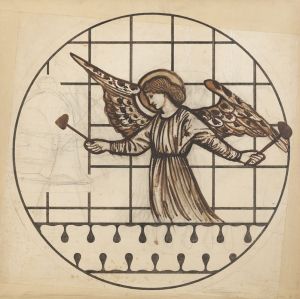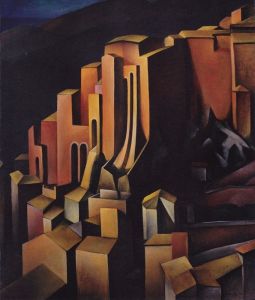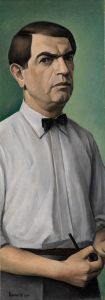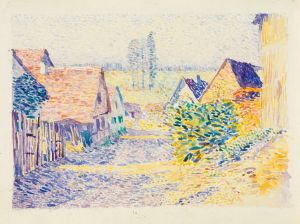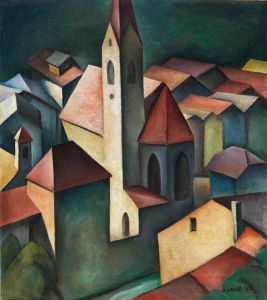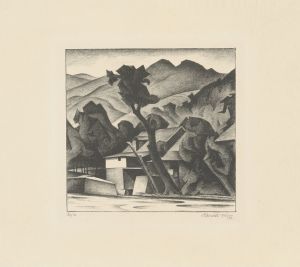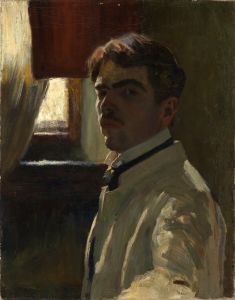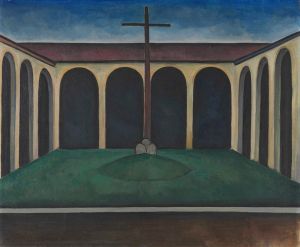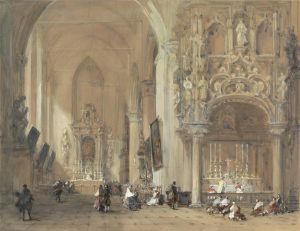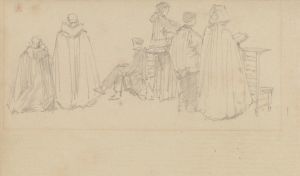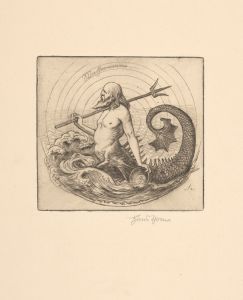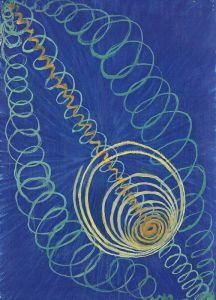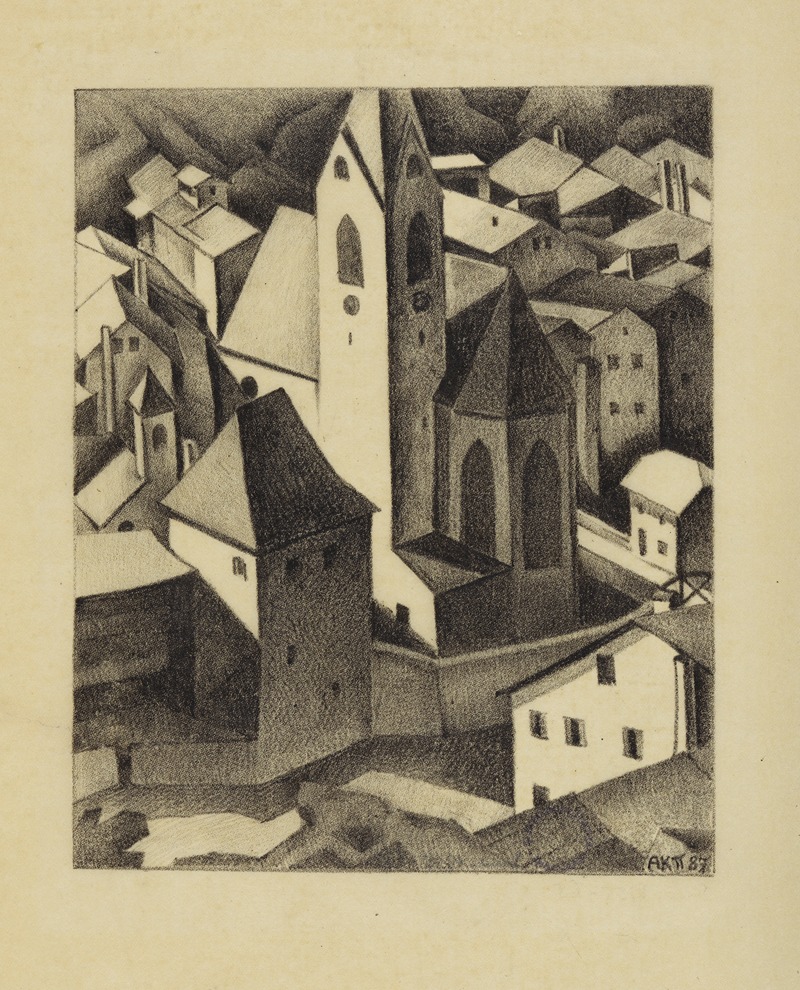
Die Kirche von Klausen in Tirol
A hand-painted replica of Alexander Kanoldt’s masterpiece Die Kirche von Klausen in Tirol, meticulously crafted by professional artists to capture the true essence of the original. Each piece is created with museum-quality canvas and rare mineral pigments, carefully painted by experienced artists with delicate brushstrokes and rich, layered colors to perfectly recreate the texture of the original artwork. Unlike machine-printed reproductions, this hand-painted version brings the painting to life, infused with the artist’s emotions and skill in every stroke. Whether for personal collection or home decoration, it instantly elevates the artistic atmosphere of any space.
Alexander Kanoldt's painting Die Kirche von Klausen in Tirol (The Church of Klausen in Tyrol) is a work by the German artist associated with the New Objectivity (Neue Sachlichkeit) movement. Kanoldt, born in 1881 in Karlsruhe, Germany, was a prominent figure in early 20th-century art, known for his precise and often serene depictions of landscapes, still lifes, and architectural scenes.
This particular painting, Die Kirche von Klausen in Tirol, is believed to have been created during Kanoldt's exploration of landscapes and architecture, a recurring theme in his oeuvre. The work depicts a church in Klausen, a small town in the Tyrol region, which is located in present-day northern Italy. The town, known for its picturesque Alpine scenery and historical architecture, provided a rich source of inspiration for artists of the time. Kanoldt's portrayal of the church reflects his characteristic style, which combines meticulous attention to detail with a sense of clarity and order.
Kanoldt was influenced by various artistic movements, including Cubism and Italian Renaissance art, which is evident in his structured compositions and use of geometric forms. In Die Kirche von Klausen in Tirol, these influences may be observed in the precise rendering of the church's architectural elements and the harmonious arrangement of the surrounding landscape. The painting exemplifies the New Objectivity movement's focus on realism and a departure from the emotional intensity of Expressionism, which had dominated German art in the years prior.
The exact date of the painting's creation is not definitively documented, but it likely falls within the period of Kanoldt's mature career, during the 1920s or 1930s. This was a time when he was actively participating in exhibitions and contributing to the development of the New Objectivity movement alongside other notable artists such as Otto Dix and George Grosz.
Kanoldt's works, including Die Kirche von Klausen in Tirol, are celebrated for their technical precision and ability to evoke a sense of stillness and contemplation. Today, his paintings are held in various public and private collections, though specific details about the current location of Die Kirche von Klausen in Tirol are not readily available.
As with many works of art from this period, the painting reflects both the artist's personal vision and the broader cultural and artistic trends of the time. Alexander Kanoldt remains an important figure in the history of modern art, and Die Kirche von Klausen in Tirol is a testament to his skill and artistic legacy.





